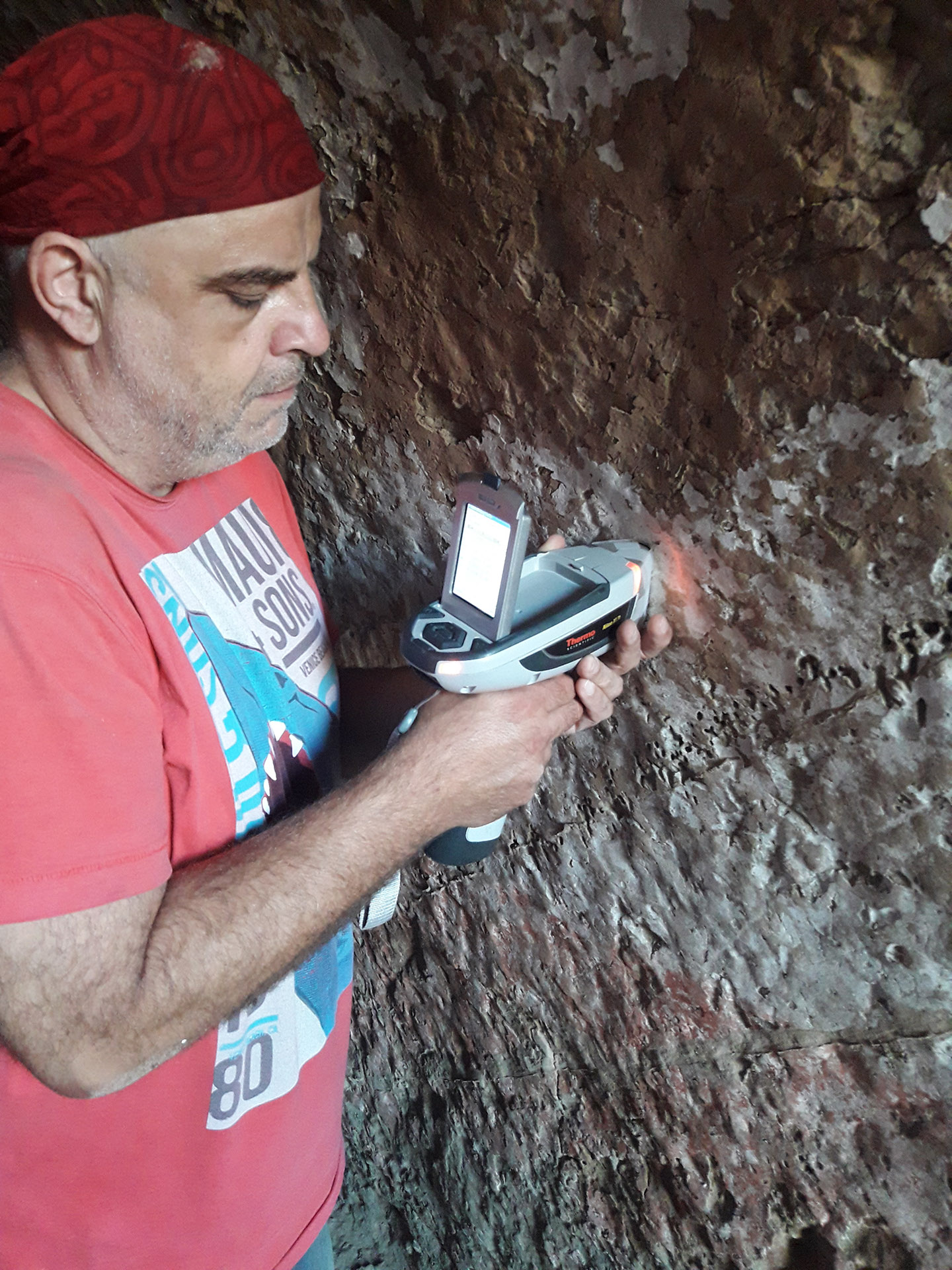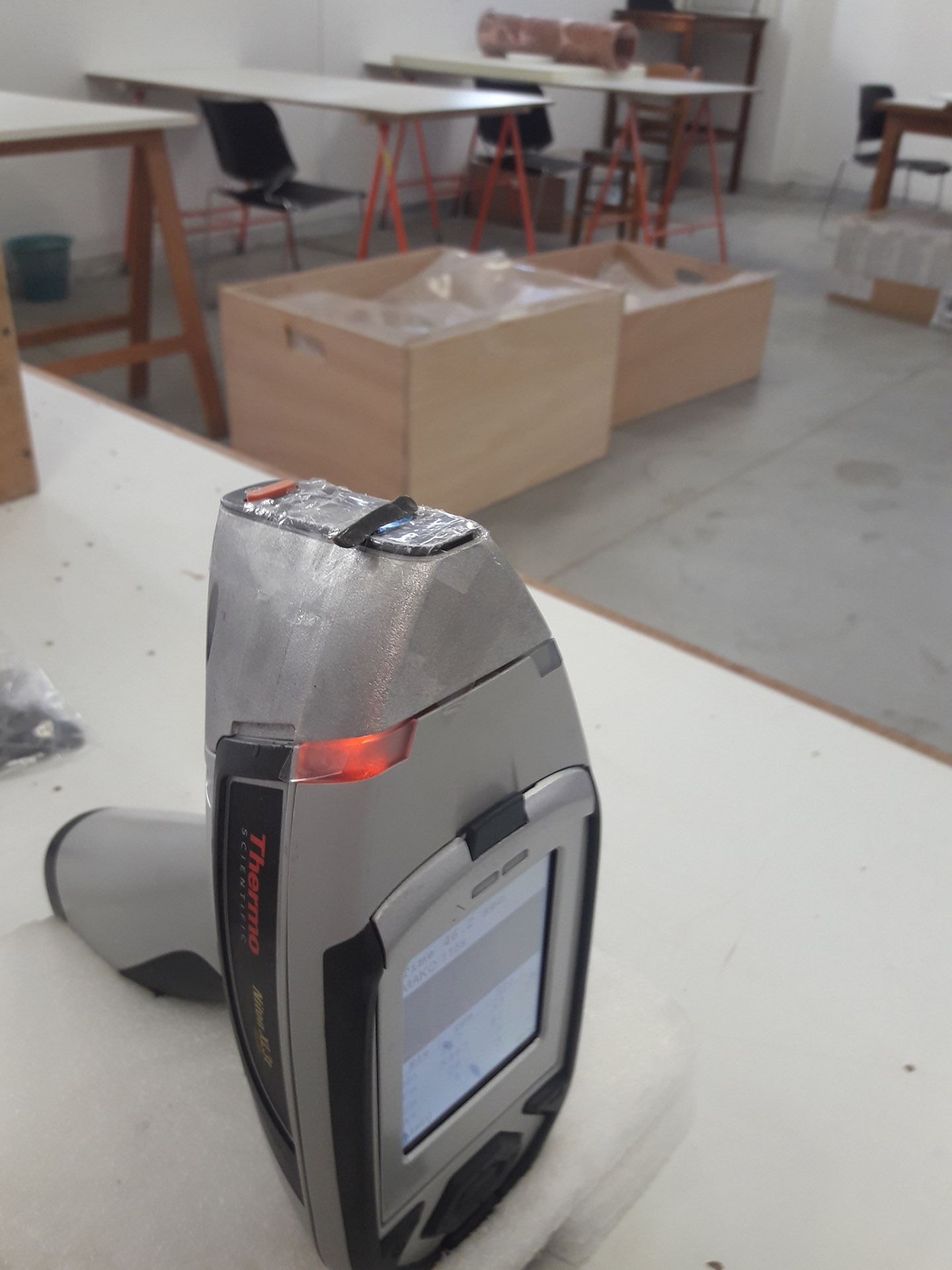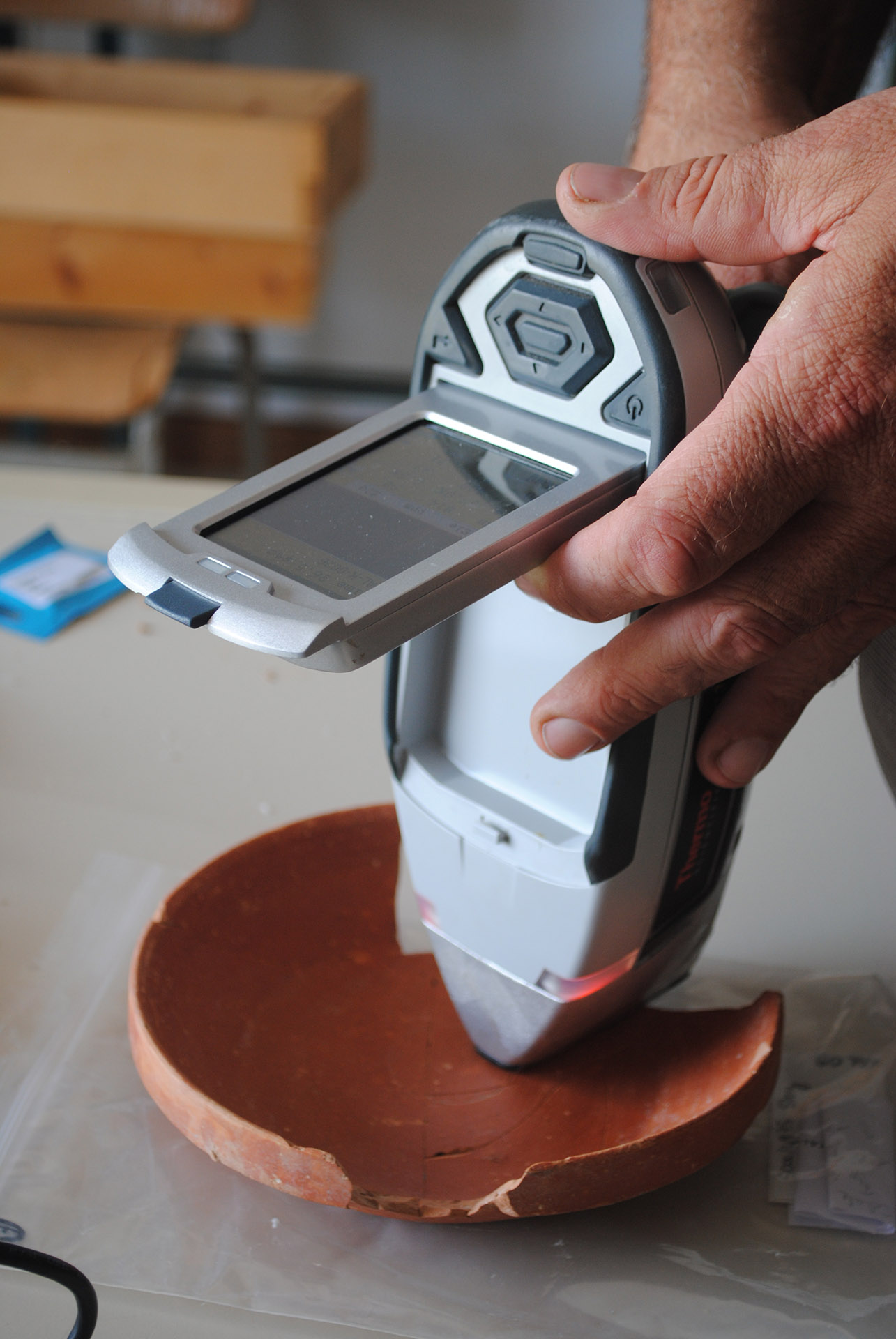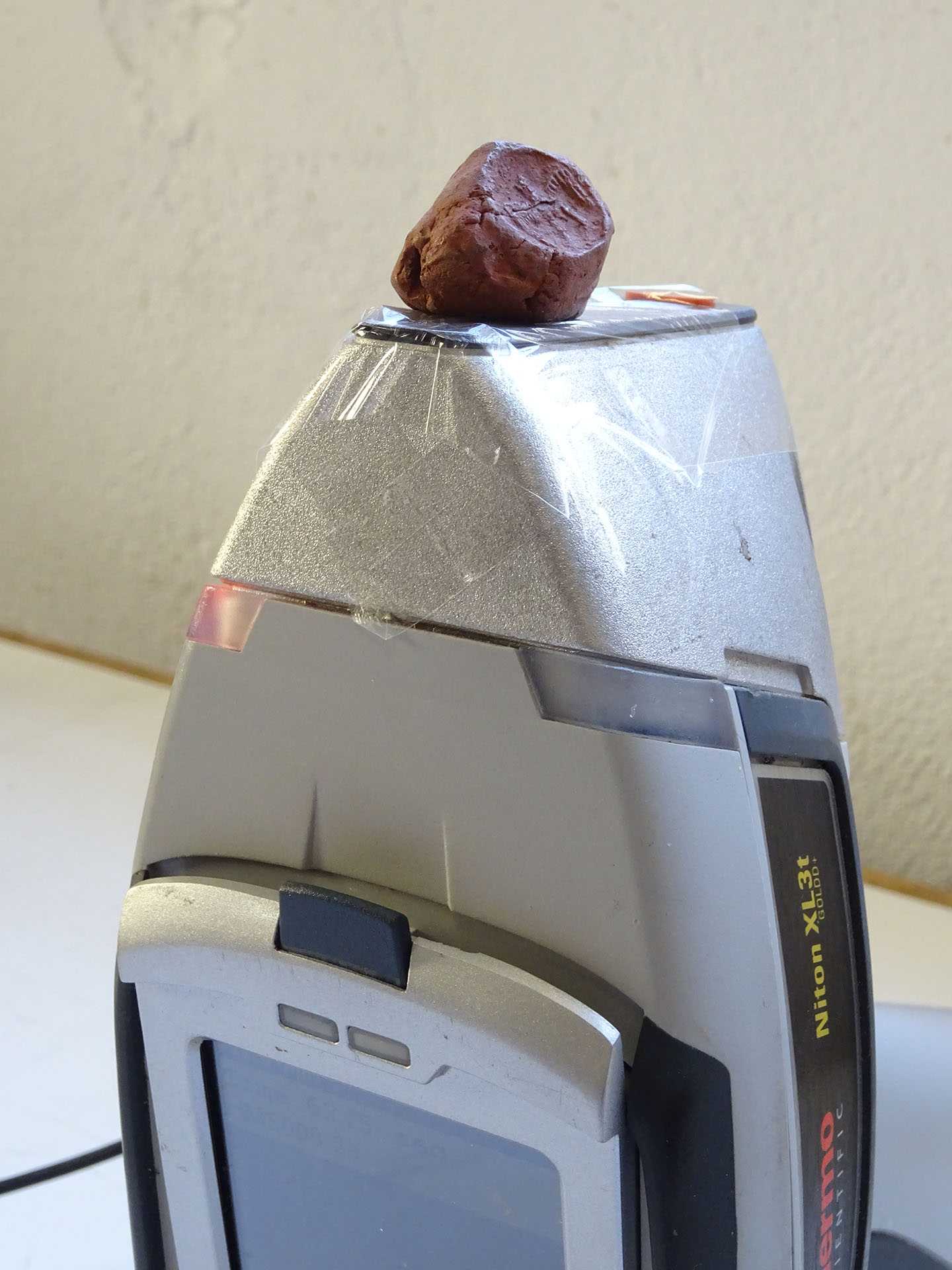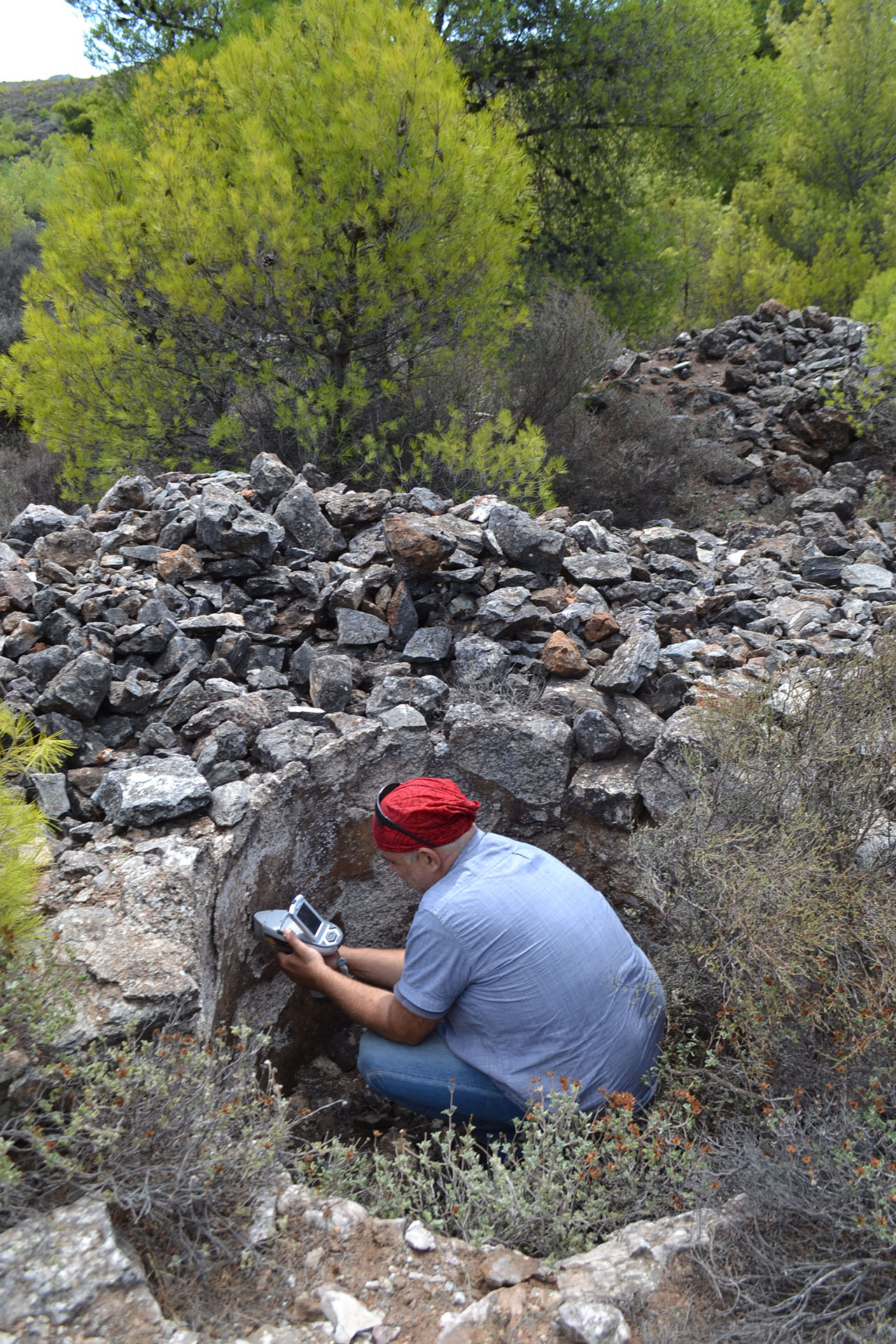Energy dispersive XRF
Variety of materials, such as ceramics, metals, mortars, obsidian, pigments, marbles etc.. Without using vacuum or helium flow, concentrations of elements with atomic numbers > 13 (Al) in the case of the ‘mining’ method or > 16 (S) in the case of the ‘soil’ method are reliably determined.
During the measurement the system can be either placed in a stand looking upwards and the samples on top or it can be handheld and in this way used for in-situ measurements even in the field.
The measurement area had an estimated diameter of c. 6 millimeters and a photograph of each area is recorded with the integrated camera. The analytical method is completely non-destructive and non-invasive. It has to be considered though that XRF is a highly surface sensitive method, so that for analyses of base materials surface areas have to be selected, which appear to be clear from deterioration or encrustations.
Samples are typically analysed with multiple measurements at different spots in order to assess compositional variability and to exclude potential surface contaminations.
